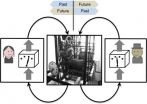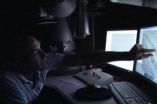(Press-News.org) COLUMBUS, Ohio – Eating an apple a day might in fact help keep the cardiologist away, new research suggests.
In a study of healthy, middle-aged adults, consumption of one apple a day for four weeks lowered by 40 percent blood levels of a substance linked to hardening of the arteries.
Taking capsules containing polyphenols, a type of antioxidant found in apples, had a similar, but not as large, effect.
The study, funded by an apple industry group, found that the apples lowered blood levels of oxidized LDL -- low-density lipoprotein, the "bad" cholesterol. When LDL cholesterol interacts with free radicals to become oxidized, the cholesterol is more likely to promote inflammation and can cause tissue damage.
"When LDL becomes oxidized, it takes on a form that begins atherosclerosis, or hardening of the arteries," said lead researcher Robert DiSilvestro, professor of human nutrition at Ohio State University and a researcher at the university's Ohio Agricultural Research and Development Center. "We got a tremendous effect against LDL being oxidized with just one apple a day for four weeks."
The difference was similar to that found between people with normal coronary arteries versus those with coronary artery disease, he said.
The study is published online in the Journal of Functional Foods and will appear in a future print edition.
DiSilvestro described daily apple consumption as significantly more effective at lowering oxidized LDL than other antioxidants he has studied, including the spice-based compound curcumin, green tea and tomato extract.
"Not all antioxidants are created equal when it comes to this particular effect," he said.
DiSilvestro first became interested in studying the health effects of eating an apple a day after reading a Turkish study that found such a regimen increased the amount of a specific antioxidant enzyme in the body.
In the end, his team didn't find the same effect on the enzyme, but was surprised at the considerable influence the apples had on oxidized LDL.
For the study, the researchers recruited nonsmoking healthy adults between the ages of 40 and 60 who had a history of eating apples less than twice a month and who didn't take supplements containing polyphenols or other plant-based concentrates.
In all, 16 participants ate a large Red or Golden Delicious apple purchased at a Columbus-area grocery store daily for four weeks; 17 took capsules containing 194 milligrams of polyphenols a day for four weeks; and 18 took a placebo containing no polyphenols. The researchers found no effect on oxidized LDLs in those taking the placebo.
"We think the polyphenols account for a lot of the effect from apples, but we did try to isolate just the polyphenols, using about what you'd get from an apple a day," DiSilvestro said. "We found the polyphenol extract did register a measurable effect, but not as strong as the straight apple. That could either be because there are other things in the apple that could contribute to the effect, or, in some cases, these bioactive compounds seem to get absorbed better when they're consumed in foods."
Still, DiSilvestro said polyphenol extracts could be useful in some situations, "perhaps in higher doses than we used in the study, or for people who just never eat apples."
The study also found eating apples had some effects on antioxidants in saliva, which has implications for dental health, DiSilvestro said. He hopes to follow up on that finding in a future study.
The study was conducted as a Master's thesis by graduate student Shi Zhao, and was funded by a grant from the U.S. Apple Association/Apple Product Research and Education Council and a donation from Futureceuticals Inc. of Momence, Ill.
Also involved in the study were associate professor Joshua Bomser and research associate Elizabeth Joseph, both in the Department of Human Nutrition, which is housed in the university's College of Education and Human Ecology.
###
Contact: Robert DiSilvestro, (614) 292-6848; RDiSilvestro@ehe.osu.edu
Written by Martha Filipic, (614) 292-9833; Filipic.3@osu.edu
Study: An apple a day lowers level of blood chemical linked to hardening of the arteries
2012-10-02
ELSE PRESS RELEASES FROM THIS DATE:
Among voters lacking strong party preferences, Obama faces 20% handicap due to race bias
2012-10-02
An online study of eligible voters around the country revealed that the preference for whites over blacks is the strongest in the least politically-partisan voters. Among these voters, race biases against Barack Obama could produce as much as a 20 percent gap in the popular vote in a contest that would otherwise be equal.
"Although they may not determine the election outcome, race biases are having a strong anti-Obama effect among the least politically partisan voters," said Anthony Greenwald, a University of Washington psychology professor who conducted the survey. "If ...
New research model to aid search for degenerative disease cures
2012-10-02
Irvine, Calif., Oct. 2, 2012 — Efforts to treat disorders like Lou Gehrig's disease, Paget's disease, inclusion body myopathy and dementia will receive a considerable boost from a new research model created by UC Irvine scientists.
The team, led by pediatrician Dr. Virginia Kimonis, has developed a genetically modified mouse that exhibits many of the clinical features of human diseases largely triggered by mutations in the valosin-containing protein.
The mouse model will let researchers study how these now-incurable, degenerative disorders progress in vivo and will ...
Quantum causal relations: A causes B causes A
2012-10-02
This press release is available in German.
One of the most deeply rooted concepts in science and in our everyday life is causality; the idea that events in the present are caused by events in the past and, in turn, act as causes for what happens in the future. If an event A is a cause of an effect B, then B cannot be a cause of A. Now theoretical physicists from the University of Vienna and the Université Libre de Bruxelles have shown that in quantum mechanics it is possible to conceive situations in which a single event can be both, a cause and an effect of another one. ...
Ames Laboratory finds ordered atoms in glass materials
2012-10-02
Scientists at the U.S. Department of Energy's Ames Laboratory have discovered the underlying order in metallic glasses, which may hold the key to the ability to create new high-tech alloys with specific properties.
Glass materials may have a far less randomly arranged structure than formerly thought.
Over the years, the ideas of how metallic glasses form have been evolving, from just a random packing, to very small ordered clusters, to realizing that longer range chemical and topological order exists.
But by studying the structure of a metallic glass alloy formed ...
Use of EHR associated with improvements in outcomes for patients with diabetes
2012-10-02
OAKLAND, Calif., October 1, 2012 — Use of electronic health records was associated with improved drug-treatment intensification, monitoring, and risk-factor control among patients with diabetes, according to a new Kaiser Permanente study.
In the study, which appears in the current issue of Annals of Internal Medicine, researchers also noted greater improvements among patients with poorer control of their diabetes and lipids. The findings provide an important contribution to the evidence base by demonstrating that, for the first time in a large population, EHRs help clinicians ...
Study examines safety of quadrivalent HPV vaccine given to females
2012-10-02
CHICAGO – A study of girls and young women in California suggests that the quadrivalent human papillomavirus vaccine (HPV4) appeared to be associated with syncope (fainting) on the day of vaccination and skin infections in the two weeks after vaccination, according to a report published Online First by Archives of Pediatrics & Adolescent Medicine, a JAMA Network publication.
Human papillomavirus (HPV) is a family of small DNA viruses and infections with this viral family are the most commonly detected sexually transmitted infections in women. While most of these infections ...
Psychiatric disorders persist after youths leave detention
2012-10-02
CHICAGO --- It was a study everyone thought couldn't be done -- tracking, locating and interviewing nearly 2,000 youths up to five years after they were released from juvenile detention in Chicago to assess their mental health.
But a team of intrepid Northwestern Medicine researchers found the young men and women and traveled anywhere necessary to interview them. Many were interviewed after they returned home. Others, however, were interviewed in less conventional locations -- a dancer on a break from her job in a nightclub, a woman in her boyfriend's garbage truck or ...
Study suggests high use of medicare skilled nursing benefit at end of life
2012-10-02
CHICAGO – Almost one-third of older adults received care in a skilled nursing facility in the last six months of life under the Medicare posthospitalization benefit, according to a report published Online First by Archives of Internal Medicine, a JAMA Network publication.
While most Medicare beneficiaries enroll in skilled nursing facility (SNF) care for rehabilitation or life-prolonging care, experience suggests that some dying patients are discharged to a SNF for end-of-life care. Switching patients from Medicare coverage under the SNF benefit to the hospice benefit ...
Psychiatric disorders may persist in some young people after detention
2012-10-02
CHICAGO – A study of juveniles detained in Chicago suggests that more than 45 percent of males and nearly 30 percent of females had one or more psychiatric disorders with associated impairment five years after detention, according to a report published in the October issue of Archives of General Psychiatry, a JAMA Network publication.
Psychiatric disorders are prevalent among incarcerated juveniles. The disorders are likely to persist as the juveniles grow to be young adults because risk factors for psychiatric disorders are common among delinquent youth, including maltreatment, ...
Auto experts recognize cars like most people recognize faces
2012-10-02
When people – and monkeys – look at faces, a special part of their brain that is about the size of a blueberry "lights up." Now, the most detailed brain-mapping study of the area yet conducted has confirmed that it isn't limited to processing faces, as some experts have maintained, but instead serves as a general center of expertise for visual recognition.
Neuroscientists previously established that this region, which is called the fusiform face area (FFA) and is located in the temporal lobe, is responsible for a particularly effective form of visual recognition. But ...

